India is a land of diversity, with varying ethnicities, cultures, customs, religions and more. Its rich and complex history would justify the reasons behind the medley. We are more familiar with stories that tell of the invasion and occupation of the country by foreign powers, but we are not familiar with the time in history when people willingly migrated to the country without the intention of invading. Today's post is about one of these stories. The story of Parsis. Here we will find out who they are, how they came to India, their contributions, customs and status today. Read on to find out.
Who is Parsis?
Parsis are an ethnic minority group in India. The members of this society are of the Zoroastrian faith and thus practitioners of Zoroastrianism, the first monotheistic religion that ever existed. Parsis are descendants of a group of Zoroastrians who had fled the Sassanid Empire, which was a neo-Persian empire in 7. th century. Today, this community makes up 0.01% of the Indian population, but is still one of the most influential people in the country due to their contribution to Indian society.
Parsis is not only found in India. There are Parsis living in Iran, Afghanistan, Pakistan, Bangladesh, Canada and the United States, Great Britain, Tajikistan, Uzbekistan and other countries, but this post will talk about those in India, because that is where the largest number of Parsis can be found. P>
History:From Iran to India
I 7 th century, the Arabs invaded the Sassanid Empire and managed to defeat their king, Yazdegerd III. This also marked the fall of the empire.
Zoroastrianism was the official religion of the Sassanid Empire. But as the Arabs took over, they wanted to forcibly convert the people to Islam. Those who did not want to convert were charged high taxes that they would not be able to pay. A handful of people from this era refused to convert to Islam or pay these newly imposed taxes, so they decided to flee the country. They also wanted to protect their religion, so they traveled between 8 th And 10 th century and eventually settled in India.
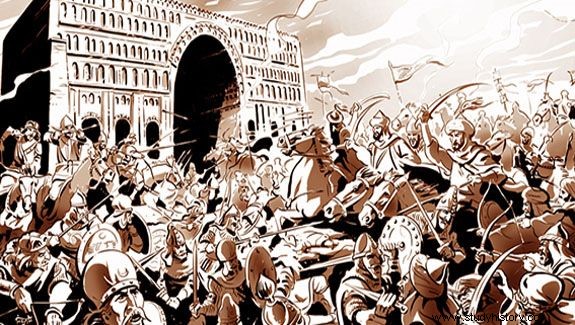
As they study the route and the fact that it took centuries before the people of Iran became predominantly Muslim, many scholars claim that it may not have been just religious persecution they avoided. They could have emigrated for financial reasons as well.
They believe that the people who fled came from trading families and did not just include Zoroastrians. The Arabs who took over wanted to harass the non-Muslims. They wanted to limit their trading opportunities by imposing high taxes on their goods. Consequently, they failed to remain competitive and eventually had to relocate.
They first went to northern Iran, near the mountains, then moved to the city of Hormuz on the island of Hormuz in the Persian Gulf. In the face of further problems, they took the sea route and ferried through the Arabian Sea in small boats, to the Indian island of Diu before finally arriving in Sanjan, an area in the Indian state of Gujarat.
This theory would explain why they decided to go to Sanjan, as the place was then an important trading port. This means that there may be better financial opportunities for them.
At Sanjan
When they arrived, they met the king or, Rajah of Sanjan, Jadi Rana. A representative, one of the Zoroastrian priests, was sent to communicate with the king. At first the king was hesitant, but then the priest politely asked for some milk and sugar. He took a spoonful of sugar and dissolved it in a glass of milk and compared its presence with the sugar. They assured the king that just as sugar enhances the taste of milk without spoiling its taste, they would do the same if they were allowed into the community.
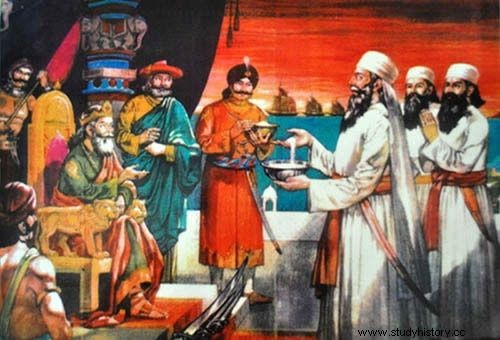
The king then allowed them to take refuge under the condition that:
- they explained their religion
- they give up their mother tongue and adopt the gujarati language, except during prayers and occasions
- The Parsi women had to wear saris instead of their own dress
- The Parsi men were not allowed to carry weapons
- Their marriage could only take place after sunset.
These conditions were imposed to help them assimilate into Indian society and to protect them from the pressure of the locals who would try to convert them.
Parsis agreed and after two centuries of struggle, they could finally have a place to call their own. When they settled in Gujarat, they took the lives of artisans, simple merchants and farmers, and over time their community grew further near the coast and beyond.
Over the years Sanjan lost its importance as a trading port, Parsis also slowly moved out of the area to other areas in Gujarat and Maharashtra.
The stories of their ancestor's journey from Persia through the Arabian Sea to Sanjan are recorded in Qissa-i-Sanjan or literally, the story of Sanjan. Before it was written down in 16 th century, the story was verbally passed on to future generations.
Moving to Bombay
A large number of those who left Gujarat had moved to Bombay, in Maharashtra. Between 17 th and 18 th For centuries, European merchants had established their strongholds in India, and Bombay was one of the cities where they had established a trading port. The place had new vacancies open to all, and the Parisians seized the opportunity whenever they could. Soon the population of Parsis grew even more in the city.
Connection with the British in Colonial India
I 19 th century, when the British wanted to trade opium and silk with the Chinese, the tough men needed to accompany them to meet pirates and smugglers. Parsis became their top choice. The British had witnessed their skill in the Muslim-Parsi riots in Bombay in the past, thus influencing their decision. Soon society had built a relationship with the British, and through this new profession they gradually became prosperous.
With their newfound wealth, they could soon own ships and trade on their own. And they could afford to send their children to English medium schools that were otherwise difficult and seen as a luxury by the average Native American.
With an English education, the younger generation would gradually adopt Western ways and would transform into liberal thinkers. This resulted in the Pars gaining a reputation for being a literate, progressive and successful group of people, both British and Native American. However, some Indians criticized this change when they thought they were sucking up to the British.
Contribution to Indian Society
Parsis has always been a small part of the Indian population but their existence has helped India to achieve its achievements and shape India to what it is today.
Members of this community have always had an entrepreneurial spirit, thanks to the fact that they were responsible for the establishment of the Bombay Stock Exchange, Asia's first stock exchange; India's first steelworks, first bank, first airline, first luxury hotel, first public hospital and so much more.
Since finding ways to amass wealth, they have practiced top professions, many of whom were bankers, merchants, engineers, industrialists, actors, etc.
Even today, some of India's best industrialists, businessmen, and billionaires are members of the Persian community.
Not only have they contributed to India's economic success, but they have also been involved in charitable actions. This quality is actually rooted in their culture, because one of the Zoroastrian beliefs is to do good deeds, and therefore make them some of the most charitable people in the country. Among other things, they are responsible for the construction of roads, public health centers, educational institutes and hotels. For example, on 19 th century, the first medical college, Grant Medical College was founded in Bombay by Jamsetjee Jejeebhoy, a remarkable and very prosperous Parsi.

They even helped India in the Indian freedom movement. Madame Cama, a Persian woman, wanted to write literature for the Indian freedom movement. Dadabhai Naraoji, a Parsiman, was one of the founders of the Indian National Congress (INC). The INC was one of the political groups that led to India gaining independence from the British.
Remarkable Parsis
Freddie Mercury, lead singer of the famous British rock band Queen, was of Parsi descent.

Homi Bhaba was a Parisian scientist whose findings and achievements in nuclear physics earned him the title "father" of nuclear research in India. He was the main person behind the design of India's nuclear program.
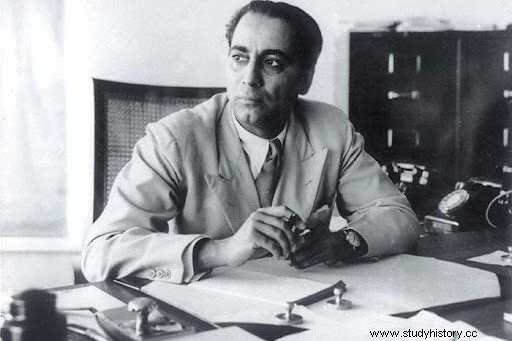
The families of Tata, Godrej and Wadia are some of the best industries in India.
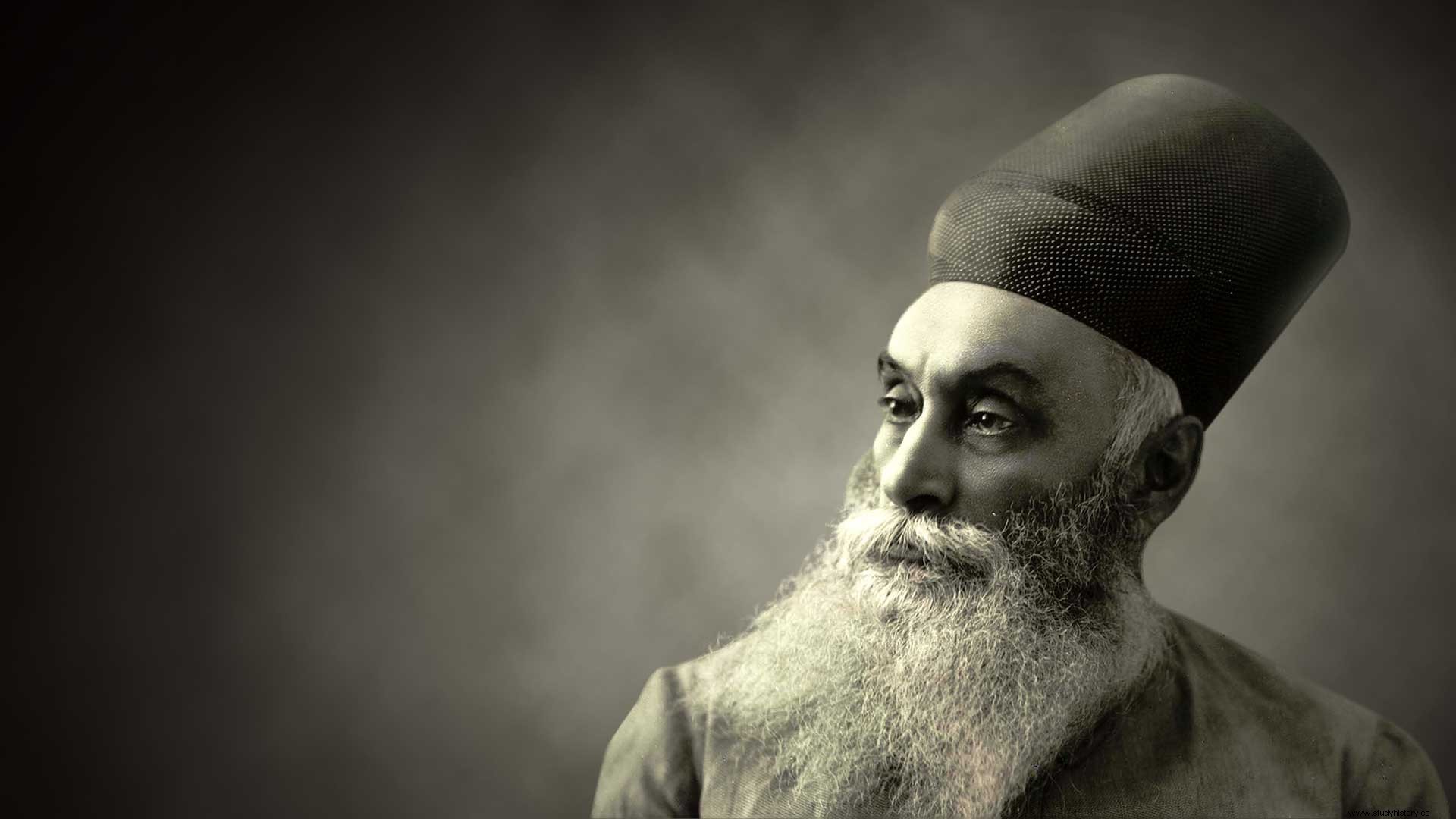
Parsi lifestyle, identity and customs
Religion is part of the Parsi identity, but not all Zoroastrians are Parsi. Zoroastrians can also refer to the Iranians, a group of people who also came from Iran to the west coast of India, namely to the states of Gujarat and Maharashtra between 19 th and 20 th centuries . Parsis refers to the descendants of the Zoroastrians who came to India between 8 th and 10 th centuries. Today, the two terms are used interchangeably, but there is a difference in lifestyle, language, name and more.
Furthermore, a person may become Zoroastrian through an initiation ceremony called Navjot, but that would not make them Parsi. The Parsi identity is inherited only at birth.
Parsis is today mainly inhabited in Mumbai (formerly known as Bombay) and in areas of Gujarat. A small number of Parsis can even be seen in other cities in India, especially near the port cities like Chennai and Kolkata. They are proud of their religion and their Parsi identity.
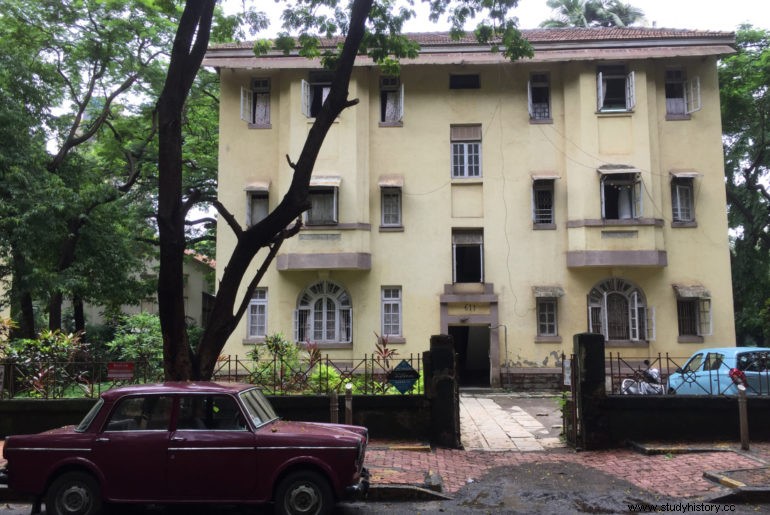
Some general ideas about the Parsi people are that they are hardworking, educated and wealthy to maintain their special lifestyle. Education is extremely important to them, as they believe it is the key to being progressive. And finally, that they prioritize their profession more than anything else. While these stereotypes are primarily considered positive traits, not everyone else applies like everyone else.
Names
In the 19th century, the British colonialists wanted to keep track of the people who lived in the areas they had taken over. They found no effective way and asked for a list of Indian surnames. Some sources say that the British made it mandatory for everyone to have a last name.
In any case, ordinary people had to submit a list of names, and many of Parsis decided to adopt surnames related to their profession or place of origin. Some became, for example, Motiwala, which means a person who trades pearls; others adopted the name Kapadia, a person who trades in cloth and textiles; Thanewala means a person from the city of Thane and so on.
Language
Today's Parsis can speak fluent English, Gujarati and Hindi. Their mother tongue from Persia was known as Avestan. This language is used for prayers and religious rituals.
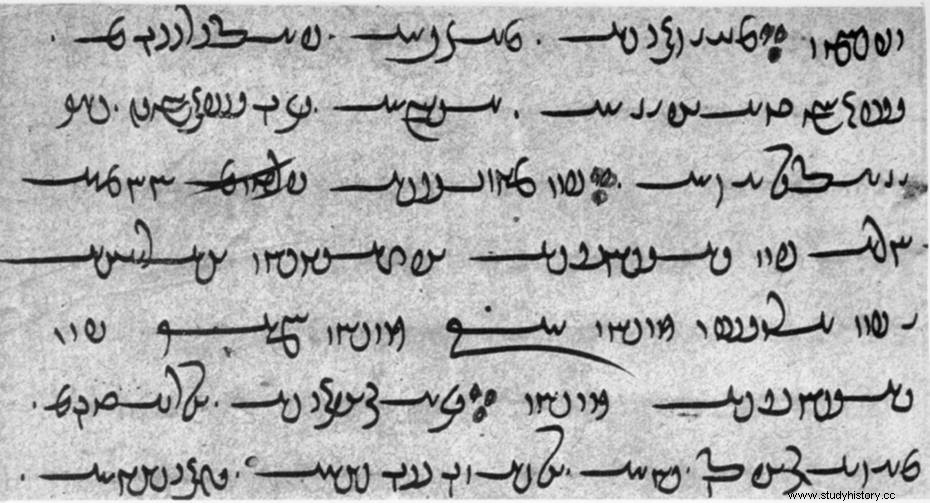
Religion
Zoroastrianism is at the heart of the Parsi identity. Zoroastrianism was discovered 3,500 years ago by the prophet Zarathustra in Persia. It is a monotheistic religion, which means that the followers believe in only one God. This concept of monotheism apparently began with Zoroastrianism and eventually influenced the same thing in Judaism, Christianity and Islam.
The concept of dual powers, one good and the other evil, also comes from Zoroastrianism; another principle that is also found in the three Abrahamic religions. In Zoroastrianism, Ahura Mazda is God while Ahriman is evil.
The Zoroastrians worship the elements of nature, namely fire, water, air and earth. Fire is their primary deity, as they believe it is the Son of God. All rituals, ceremonies and rituals must be performed in the presence of a fire. They also relate fire to divine energy, as the creator of life and light. Strikingly similar to the Hindu belief in fire and worship of natural elements.
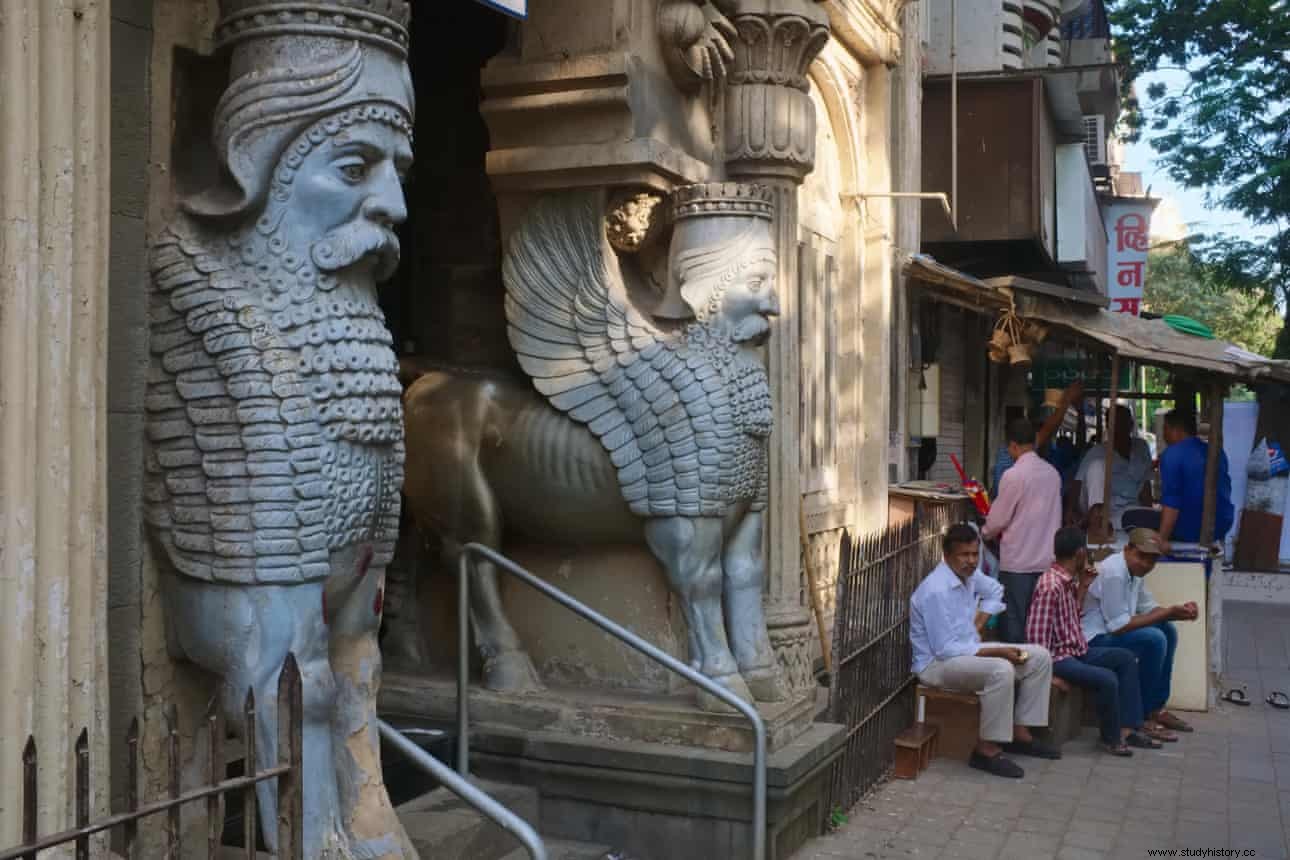
The fires are lit with sandalwood and oil as fuel. The fires in temples of fire, the most important place of worship of the Zoroastrians, must burn at all times.
According to legend, Parsis who came to India carried his eternal fire with him throughout the journey.
In addition, Zoroastrianism is based on the principle of practicing good thoughts, good words and good deeds. They believe in performing simple tasks with care, sincerity and with regard to others.
Festivals &Ceremonies
Couple festivals are not loud or announced. They are usually celebrated in a way that does not disturb others. They celebrate them either in the homes or in the fire temples or in certain places. All the important milestones in one's life follow complex and detailed rituals.
Navjot, for example, is an initiation ceremony that new supporters of Zoroastrianism and children must go through. This ceremony indicates that a person is entering the religion. At the ceremony, a Kusti or, a sacred thread is wrapped three times around the waist of a priest. This thread should never be removed for the rest of your life.
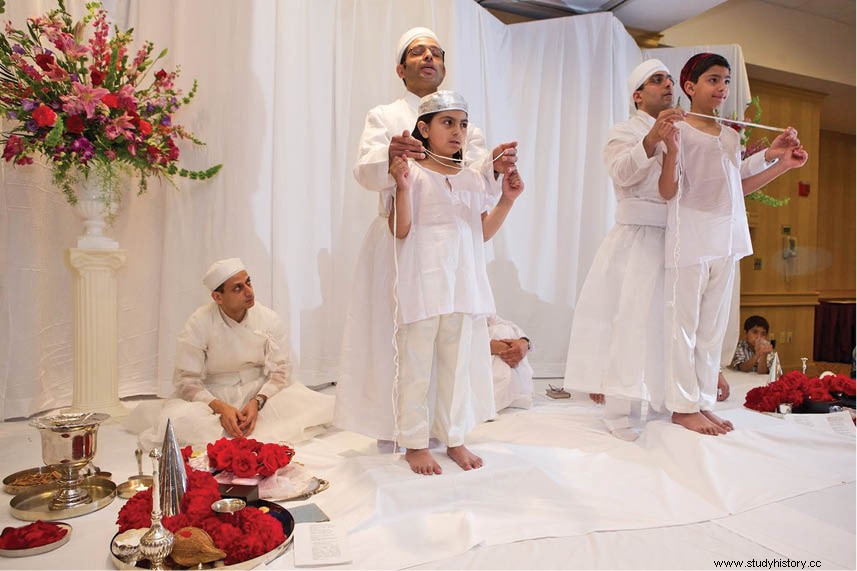
Another Parsi festival is Pateti and Navroz, which means Parsi on New Year's Eve and New Year. In the frequently used Gregorian calendar, this falls in the month of August. On this day, followers lay sandalwood on the unquenchable fire in the temple of fire, sharing sweets and partying together.
Funerals
The parishes do not bury or cremate the bodies of the dead. This is because they believe that the dead body would pollute the air, the earth and the water, the natural elements. So they leave the corpses on top of a roofless tower called the Tower of Silence. These are circular buildings at least 20 feet in height and 90 feet in diameter. The terrace is bounded by a wall and in the middle is a pit. The bodies are placed on top for vultures and hawks to eat. When they take off the meat, the bones are thrown into the pit to rot.

Due to urbanization, there has been a decline in the number of vultures, so today some use electric crematoria as alternatives.
Clothes
The traditional clothes of Parsis are as follows:
men
A jacket like a white kaftan is worn with white loose-fitting trousers fastened with laces. The caftan is attached to the waist with a white fabric. The outfit is known as dugli.
The heads are covered with a white turban or a black flat hat called a pheta.
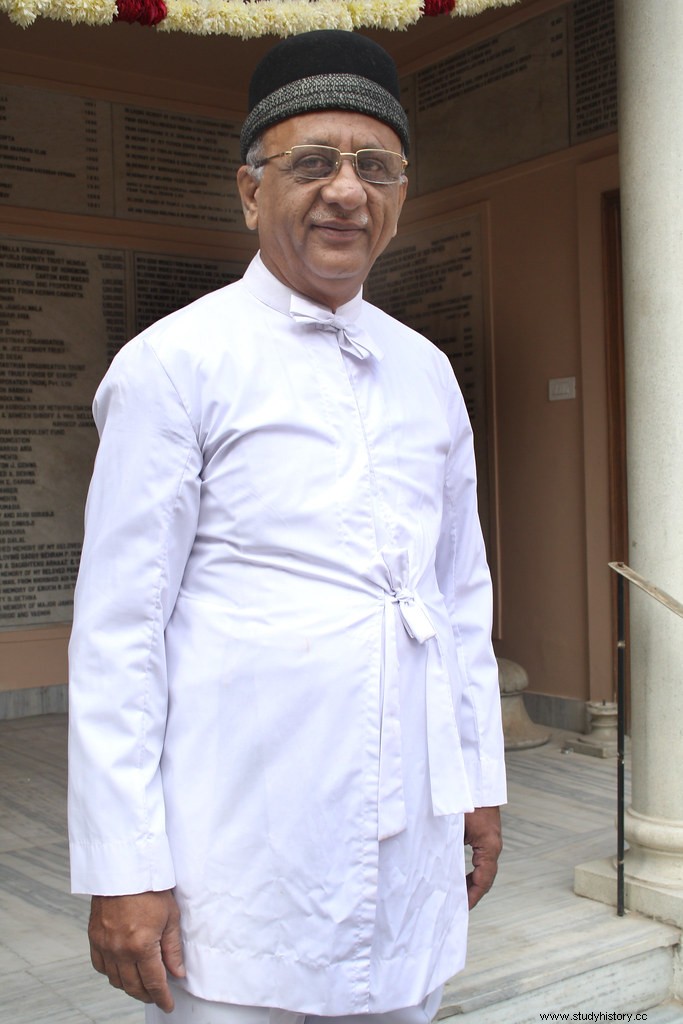
Women
Women wear sari. However, they are draped differently than the average saree. The fabric that hangs over the shoulder or pallue is carried to the right shoulder instead of the usual left.
The women also wear a special and unique Parsi sari known as a Gara. These are sarees made of either silk or chiffon with intricate and colorful embroidery. The gara connects Parsis with the historic opium trade between China and Britain. In the original garages, which are no longer available except for those passed on as family heirlooms, the artwork was hand-embroidered by Chinese artists. This is why the designs often depict Chinese stories with pagodas, shrines and bridges, along with the iconic Persian floral patterns. An original gara today is valued at at least 100,000 XNUMX INR.

cooking
The Parsi cuisine includes the main Indian ingredients lentils, vegetables and rice, and combines them with a penchant for eggs and meat. The dishes will almost always have an egg as a topping. Even the vegetable dishes are topped with eggs with the sun side up.

The recipes contain minimal Indian spices and a lot of aromatics such as ginger, garlic and onions. Their kitchen also uses jaggery, a form of browned cane sugar and acidic ingredients such as vinegar, which creates a pleasant combination of spicy, sweet and sour flavors.
When it comes to dessert, Lagan nu Custard, a pudding similar to flan or crème caramel, is a festive dessert. It can be seen especially in weddings.
Declining population
Today, the Parsi population is at risk of extinction from India as the numbers are rapidly declining. As of 2014, there are around 69,000 XNUMX Parsis left. This is a result of strict rules for interfaith marriage and low fertility.
Since they are a highly educated group of people, women establish their careers before marriage. This results in marriage at an older age, and therefore reduces the fertility rate. Although couples have children, they usually have no more than one. Moreover, many people completely opt out of marriage, and therefore do not reproduce at all.
In Parsi society, marriages between religions are becoming more and more common, and according to their regulations, women who marry non-Parsi families are no longer considered Parsi, nor are children considered Parsi.
This is because Parsi lineage is continued through the male side. As such, even if a Parsi man marries a non-Parsi woman, the man and his children are still considered Parsi.
Society today struggles to maintain its identity and population, but until a solution is found, their culture and existence will be kept alive with their heritage and legacy.
Do not hesitate to share your thoughts in the comments below and click here. for more articles like this.
References
Bhandare, S., 2017. Prize medals from the Parsi community in Bombay. The Medal, 70 (1), pp. 36-41.
Maneck, SS, 1994. Ahriman's death:Culture, identity and theological change among parsis in India. The University of Arizona, 1 (1), pp. 1-451.
Ray, JR, 1983. Ambition and dominance among the Persians in India. The Journal of Social Psychology, 119 (1), pp. 173-179.
